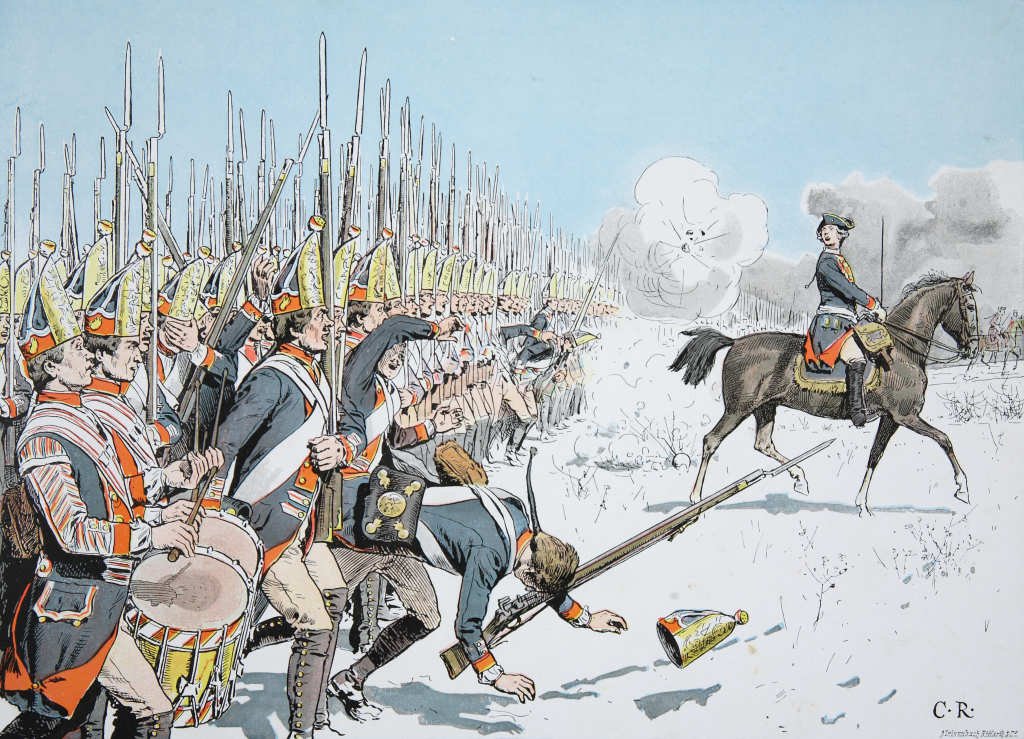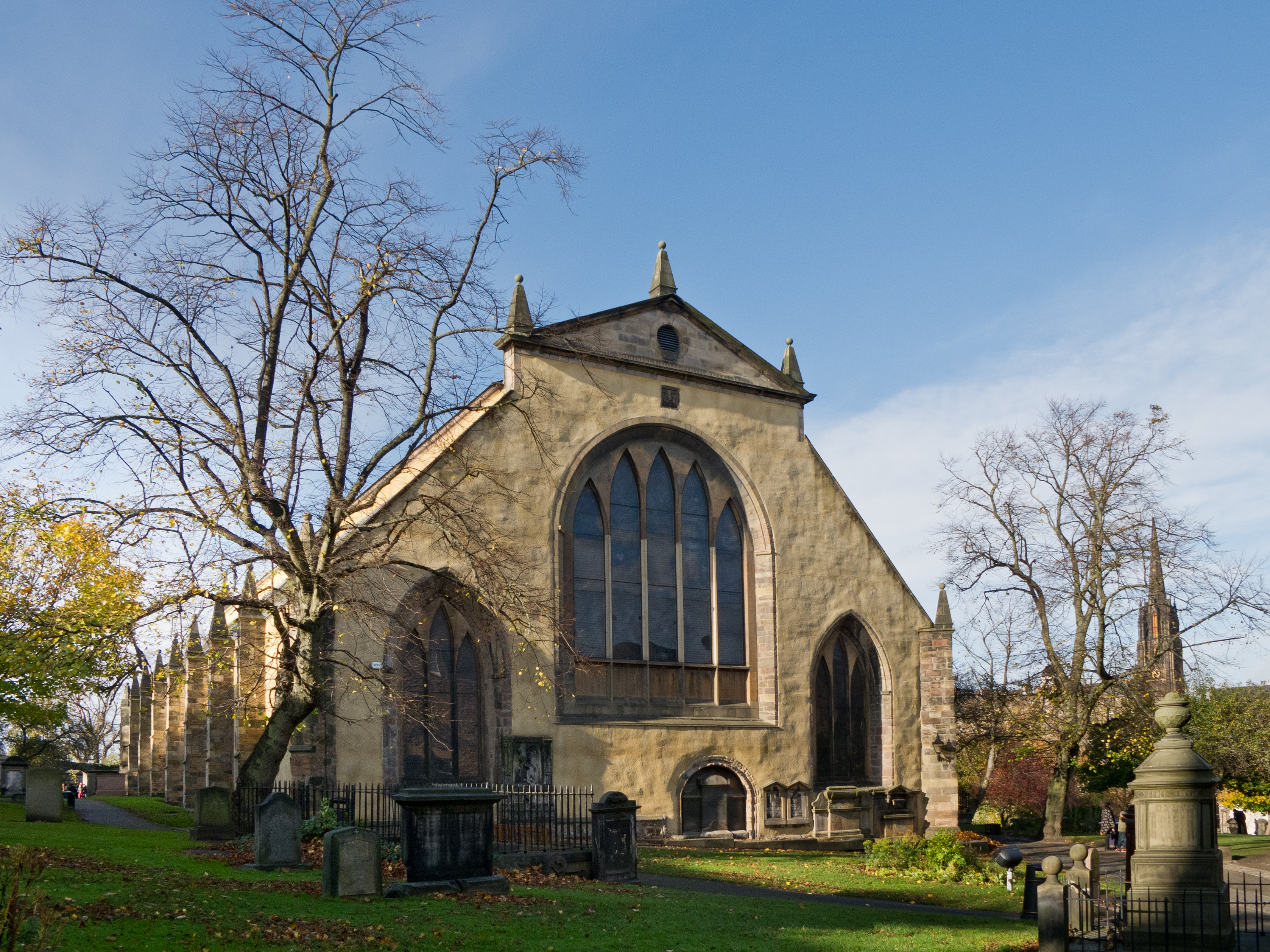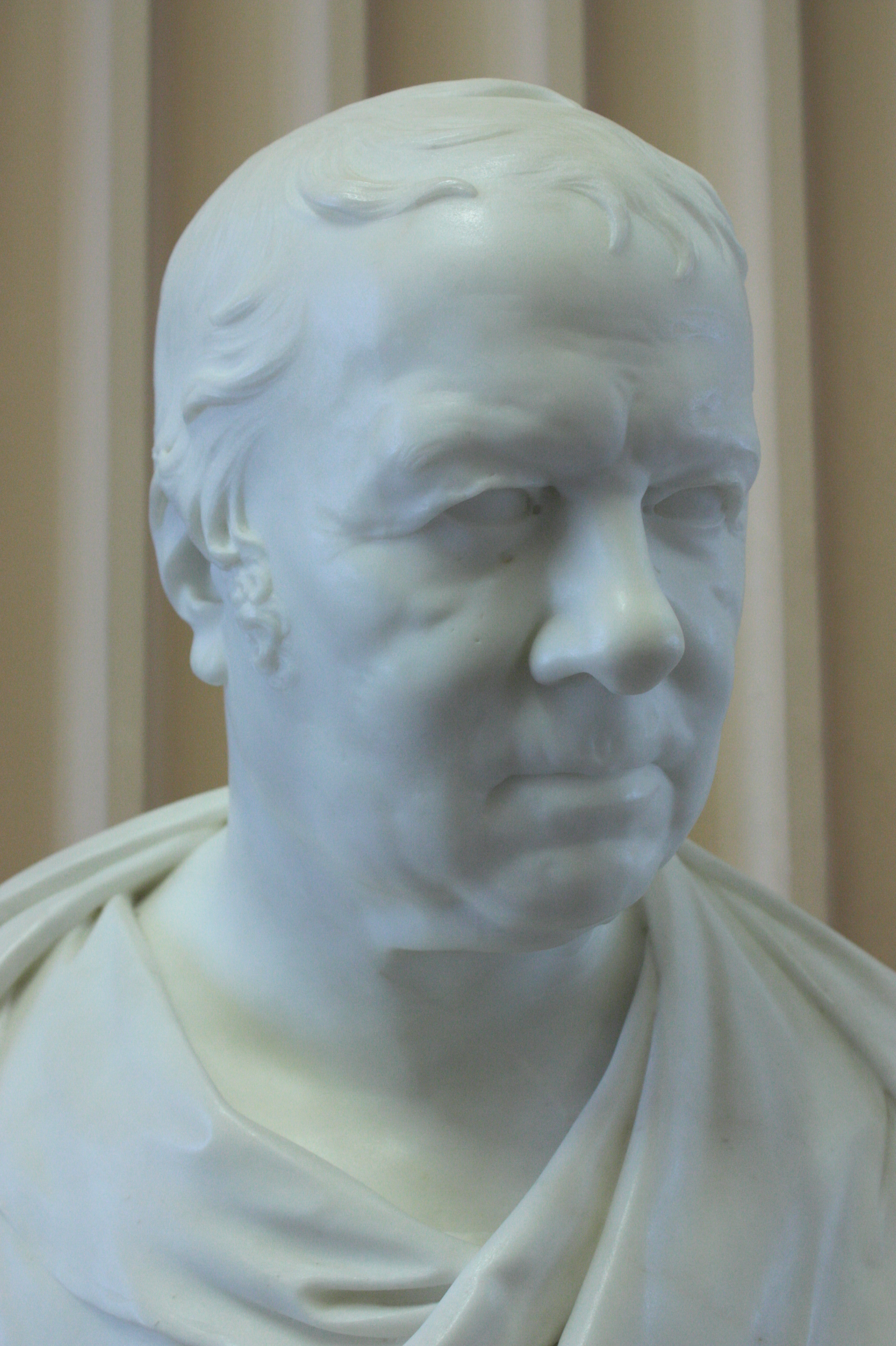|
Alexander Dirom
Lieutenant General Alexander Dirom of Luce and Mount Annan FRS FRSE (21May 17576October 1830) was a British military commander who saw overseas service in Barbados, Jamaica and India. He is remembered not only as a military commander but also as an agricultural improver, which earned him Fellowship of both the Royal Society of London and the Royal Society of Edinburgh. His most notable contribution was to identify the importance of salt in animal diets, leading to the widespread use of "salt-licks" from around 1800. His views on the British corn trade also paved the way to the formulation of the Corn Laws in the early 19th century. Biography He was born in Banffshire the son of Alexander Dirom of Muiresk (Provost of Banff) and his wife, Ann Fotheringham. He was appointed ensign in the 61st Regiment of Foot on 8 December 1778 and lieutenant in the 88th Foot 13 October 1779. He served with the regiment in Barbados (1780) and Jamaica (1780–84) as Military Secretary to the GoC ... [...More Info...] [...Related Items...] OR: [Wikipedia] [Google] [Baidu] |
Archibald Campbell (British Army Officer)
Sir Archibald Campbell KB (21 August 1739 – 31 March 1791) was a British Army officer, colonial administrator and politician who served as governor of Georgia, Jamaica, and Madras. He was also a major landowner in Scotland and a White Rod who sat in the House of Commons of Great Britain between 1774 and 1791. Birth Archibald was baptized 24 August 1739 at Inveraray, Scotland. He was the second son of James Campbell (1706–1760) 3rd of Tuerechan (8th Chief of Tearlach, descended from Clan Campbell of Craignish), Commissary of the Western Isles of Scotland, and Elizabeth (died 1790), daughter of James Fisher, Provost of Inveraray. He grew up with his family at Dunderave Castle, and enjoyed the patronage of both Archibald Campbell, 3rd Duke of Argyll and Henry Dundas, 1st Viscount Melville. Early career Educated at Glasgow University, and afterwards at the Royal Military Academy, Woolwich. In 1758, he was commissioned into the Royal Engineers. He served with them in the ... [...More Info...] [...Related Items...] OR: [Wikipedia] [Google] [Baidu] |
1757 Births
Events January–March * January 2 – Seven Years' War: The British East India Company Army, under the command of Robert Clive, captures Calcutta, India. * January 5 – Robert-François Damiens makes an unsuccessful assassination attempt on Louis XV of France, who is slightly wounded by the knife attack. Damiens is executed on March 28.Herbert J. Redman, ''Frederick the Great and the Seven Years' War, 1756–1763'' (McFarland, 2015) p33 * January 12 – Koca Ragıp Pasha becomes the new Grand Vizier of the Ottoman Empire, and administers the office for seven years until his death in 1763. * January 17 – Ahmad Shah Durrani leads his Afghan forces to sack Delhi during his invasions of India. * February 1 – King Louis XV of France dismisses his two most influential advisers. His Secretary of State for War, the Comte d'Argenson and the Secretary of the Navy, Jean-Baptiste de Machault d'Arnouville, are both removed from office at the urg ... [...More Info...] [...Related Items...] OR: [Wikipedia] [Google] [Baidu] |
British Army Lieutenant Generals
British may refer to: Peoples, culture, and language * British people, nationals or natives of the United Kingdom, British Overseas Territories and Crown Dependencies. * British national identity, the characteristics of British people and culture * British English, the English language as spoken and written in United Kingdom of Great Britain and Northern Ireland and, more broadly, throughout the British Isles * Celtic Britons, an ancient ethno-linguistic group * Brittonic languages, a branch of the Insular Celtic language family (formerly called British) ** Common Brittonic, an ancient language Other uses *People or things associated with: ** Great Britain, an island ** British Isles, an island group ** United Kingdom, a sovereign state ** British Empire, a historical global colonial empire ** Kingdom of Great Britain (1707–1800) ** United Kingdom of Great Britain and Ireland (1801–1922) * British Raj, colonial India under the British Empire * British Hong Kong, colonial H ... [...More Info...] [...Related Items...] OR: [Wikipedia] [Google] [Baidu] |
William Muir (divine)
William Muir FRSE (1787–1869) was a Scottish minister of the Church of Scotland. He served as Moderator of the General Assembly of the Church of Scotland in 1838. Life He was born in Glasgow on 11 October 1787 the third son of William Muir a merchant. He was educated at Glasgow High School then went to first Glasgow University for a general degree then Edinburgh University to study Divinity.''Fasti Ecclesiae Scoticanae''; by Hew Scott He was licensed to preach as a Church of Scotland minister by the Presbytery of Glasgow in November 1810. In August 1812 he was ordained as minister of St George's Parish in Glasgow. He was awarded an honorary Doctor of Divinity from Edinburgh University in 1820. In September 1822 he was translated to the prestigious role as minister of New Greyfriars back in Edinburgh. In February 1829 he moved to the newly completed St Stephen's Church in Stockbridge, Edinburgh, as its first minister. In Edinburgh he then lived at 5 St Bernards Crescent, 400 ... [...More Info...] [...Related Items...] OR: [Wikipedia] [Google] [Baidu] |
Edinburgh
Edinburgh is the capital city of Scotland and one of its 32 Council areas of Scotland, council areas. The city is located in southeast Scotland and is bounded to the north by the Firth of Forth and to the south by the Pentland Hills. Edinburgh had a population of in , making it the List of towns and cities in Scotland by population, second-most populous city in Scotland and the List of cities in the United Kingdom, seventh-most populous in the United Kingdom. The Functional urban area, wider metropolitan area had a population of 912,490 in the same year. Recognised as the capital of Scotland since at least the 15th century, Edinburgh is the seat of the Scottish Government, the Scottish Parliament, the Courts of Scotland, highest courts in Scotland, and the Palace of Holyroodhouse, the official residence of the Monarchy of the United Kingdom, British monarch in Scotland. It is also the annual venue of the General Assembly of the Church of Scotland. The city has long been a cent ... [...More Info...] [...Related Items...] OR: [Wikipedia] [Google] [Baidu] |
Dumfriesshire
Dumfriesshire or the County of Dumfries or Shire of Dumfries () is a Counties of Scotland, historic county and registration county in southern Scotland. The Dumfries lieutenancy areas of Scotland, lieutenancy area covers a similar area to the historic county. In terms of historic counties it borders Kirkcudbrightshire to the west, Ayrshire to the north-west, Lanarkshire, Peeblesshire and Selkirkshire to the north, and Roxburghshire to the east. To the south is the coast of the Solway Firth, and on the other side of the border between Scotland and England the England, English county of Cumberland. Dumfriesshire has three traditional subdivisions, based on the three main valleys in the county: Annandale, Dumfries and Galloway, Annandale, Eskdale, Scotland, Eskdale and Nithsdale. These had been independent provinces of Scotland, provinces in medieval times but were gradually superseded as administrative areas by the area controlled by the sheriff principal, sheriff of Dumfries, or ... [...More Info...] [...Related Items...] OR: [Wikipedia] [Google] [Baidu] |
Battle Of Trafalgar
The Battle of Trafalgar was a naval engagement that took place on 21 October 1805 between the Royal Navy and a combined fleet of the French Navy, French and Spanish Navy, Spanish navies during the War of the Third Coalition. As part of Napoleon's planned invasion of the United Kingdom, the French and Spanish fleets combined to take control of the English Channel and provide the Grande Armée safe passage. The allied fleet, under the command of French admiral Pierre-Charles Villeneuve, sailed from the port of Cádiz in the south of Spain on 18 October 1805. They encountered a British fleet under Horatio Nelson, 1st Viscount Nelson, Lord Nelson, recently assembled to meet this threat, in the Atlantic Ocean along the southwest coast of Spain, off Cape Trafalgar. Nelson was outnumbered, with 27 British ships of the line to 33 Franco-Spanish ships, including the largest warship in either fleet, the Spanish ''Spanish ship Nuestra Señora de la Santísima Trinidad, ... [...More Info...] [...Related Items...] OR: [Wikipedia] [Google] [Baidu] |
George Duff
Captain George Duff (c. 1 February 1764 – 21 October 1805) was a Scottish officer in the Royal Navy during the American War of Independence, the French Revolutionary Wars and the Napoleonic Wars, who was killed by a cannonball at the Battle of Trafalgar. Early life Born at Banff, Scotland, the son of Banff Sheriff Clerk James Duff (1729–1804) by his marriage to Helen Skene 1734–1764, he was a kinsman (first cousin once removed) to the second and third Earls of Fife. George Duff had a passion for the sea from early childhood, stowing away on a merchant ship for a voyage when not yet a teenager. At thirteen he joined his great uncle Captain (later Admiral) Robert Duff in the Mediterranean, and was commissioned lieutenant at sixteen, breaking several fleet regulations but made possible by his uncle's interest in his career. During these years, Duff saw action thirteen times on both sides of the Atlantic, including at the Great Siege of Gibraltar and culminating in ... [...More Info...] [...Related Items...] OR: [Wikipedia] [Google] [Baidu] |
James Finlayson (minister)
James Finlayson, FRSE (15 February 1758 – 28 January 1808), was a minister in the Church of Scotland who served as Moderator of the General Assembly of the Church of Scotland 1802/3. Life Finlayson was born the eldest son of William Finlayson on 15 February 1758, at Nether Cambushinnie Farm, near Kinbuck in the parish of Dunblane, Perthshire, where his ancestors had been settled for several centuries. He made rapid progress at school (first Kinbuck then Dunblane), and began his religious studies in the University of Glasgow at the age of 14. He held two tutorships, and subsequently became amanuensis to Professor Anderson, who had discovered his abilities. In 1782, he became domestic tutor to two sons of Sir William Murray of Ochtertyre. As the family spent the winter in Edinburgh, Finlayson continued his studies at the university. He was licensed to preach in 1785. In this year, the Duke of Atholl offered Finlayson a position as minister of Dunkeld, which he declined, as Sir W ... [...More Info...] [...Related Items...] OR: [Wikipedia] [Google] [Baidu] |
John Playfair
John Playfair FRSE, FRS (10 March 1748 – 20 July 1819) was a Church of Scotland minister, remembered as a scientist and mathematician, and a professor of natural philosophy at the University of Edinburgh. He is best known for his book ''Illustrations of the Huttonian Theory of the Earth'' (1802), which summarised the work of James Hutton. It was through this book that Hutton's principle of uniformitarianism, later taken up by Charles Lyell, first reached a wide audience. Playfair's textbook ''Elements of Geometry'' made a brief expression of Euclid's parallel postulate known now as Playfair's axiom. In 1783 he was a co-founder of the Royal Society of Edinburgh. He served as General Secretary to the society 1798–1819. Life Born at Benvie, slightly west of Dundee to Margaret Young (1719/20 – 1805) and Reverend James Playfair (died 1772), the kirk minister of Liff and Benvie. Playfair was educated at home until the age of 14, when he entered the University of St Andrews ... [...More Info...] [...Related Items...] OR: [Wikipedia] [Google] [Baidu] |
Henry Mackenzie
Henry Mackenzie FRSE (August 1745 – 14 January 1831, born and died in Edinburgh) was a Scottish lawyer, novelist and writer sometimes seen as the Addison of the North. While remembered mostly as an author, his main income came from legal roles, which led in 1804–1831 to a lucrative post as Comptroller of Taxes for Scotland, whose possession allowing him to follow his interest in writing. Biography Mackenzie was born at Liberton Wynd in Edinburgh on 26 July 1745. His father, Dr Joshua Mackenzie, was a distinguished Edinburgh physician and his mother, Margaret Rose, belonged to an old Nairnshire family. Mackenzie's own family descended from the ancient Barons of Kintail through the Mackenzies of Inverlael. Mackenzie was educated at the High School and studied law at University of Edinburgh. He was then articled to George Inglis of Redhall (grandfather of John Alexander Inglis of Redhall), who was attorney for the crown in the management of exchequer business. Inglis had hi ... [...More Info...] [...Related Items...] OR: [Wikipedia] [Google] [Baidu] |








